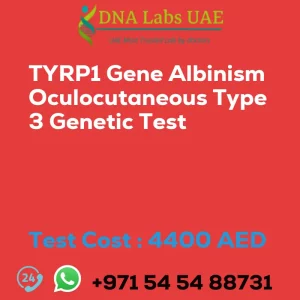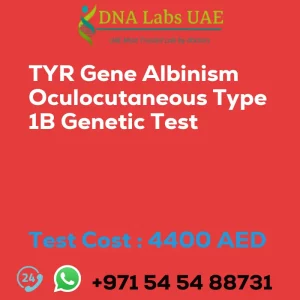C21orf2 Gene Cone-rod dystrophy – A Genetic Test
Test Name: C21orf2 Gene Cone-rod dystrophy C21orf2 related Genetic Test
Components: Blood or Extracted DNA or One drop Blood on FTA Card
Price: 4400.0 AED
Report Delivery: 3 to 4 Weeks
Method: NGS Technology
Test Type: Ophthalmology Disorders
Doctor: Ophthalmologist
Test Department: Genetics
Pre Test Information: Clinical History of Patient who is going for C21orf2 Gene Cone-rod dystrophy, C21orf2 related NGS Genetic DNA Test. A Genetic Counselling session to draw a pedigree chart of family members affected with C21orf2 Gene Cone-rod dystrophy, C21orf2 related NGS Genetic DNA Test gene C21orf2
What is Cone-rod dystrophy (CRD)?
Cone-rod dystrophy (CRD) is a rare genetic disorder that affects the retina, the part of the eye responsible for detecting light and transmitting visual information to the brain. CRD is characterized by progressive vision loss, beginning with color vision defects and central visual acuity loss, followed by peripheral vision loss.
The C21orf2 Gene and CRD
The C21orf2 gene is associated with CRD, specifically a form known as C21orf2-related CRD. This gene provides instructions for making a protein called FAM161A, which is involved in the function of photoreceptor cells in the retina.
NGS Genetic Testing for C21orf2-related CRD
NGS genetic testing for C21orf2-related CRD involves analyzing the DNA sequence of the C21orf2 gene to identify any genetic variations that may be causing the disorder. This can help with diagnosis and can also provide information about the inheritance pattern of the disorder, which can be useful for family planning.
Treatment and Future Research
Treatment for CRD is currently limited, and mainly focuses on supportive measures such as visual aids and adaptive technologies. However, ongoing research into the genetics and underlying mechanisms of the disorder may lead to new treatment options in the future.
For individuals concerned about Cone-rod dystrophy and its genetic implications, the C21orf2 Gene Cone-rod dystrophy C21orf2 related Genetic Test is available at DNA Labs UAE. The test involves a simple blood or DNA sample and utilizes NGS Technology for analysis. The test is conducted by experienced Ophthalmologists in the Genetics department. The cost of the test is 4400.0 AED and the report will be delivered within 3 to 4 weeks.
It is recommended to provide the clinical history of the patient and undergo a genetic counselling session to draw a pedigree chart of family members affected with C21orf2 Gene Cone-rod dystrophy before taking the test. This information can aid in the accurate diagnosis and understanding of the inheritance pattern.
Stay informed about the latest advancements in genetic testing and research for Cone-rod dystrophy by following DNA Labs UAE. Genetic testing can provide valuable insights for individuals and families affected by this rare genetic disorder.
| Test Name | C21orf2 Gene Cone-rod dystrophy C21orf2 related Genetic Test |
|---|---|
| Components | |
| Price | 4400.0 AED |
| Sample Condition | Blood or Extracted DNA or One drop Blood on FTA Card |
| Report Delivery | 3 to 4 Weeks |
| Method | NGS Technology |
| Test type | Ophthalmology Disorders |
| Doctor | Ophthalmologist |
| Test Department: | Genetics |
| Pre Test Information | Clinical History of Patient who is going for C21orf2 Gene Cone-rod dystrophy, C21orf2 related NGS Genetic DNA Test. A Genetic Counselling session to draw a pedigree chart of family members affected with C21orf2 Gene Cone-rod dystrophy, C21orf2 related NGS Genetic DNA Test gene C21orf2 |
| Test Details |
Cone-rod dystrophy (CRD) is a rare genetic disorder that affects the retina, the part of the eye responsible for detecting light and transmitting visual information to the brain. CRD is characterized by progressive vision loss, beginning with color vision defects and central visual acuity loss, followed by peripheral vision loss. The C21orf2 gene is associated with CRD, specifically a form known as C21orf2-related CRD. This gene provides instructions for making a protein called FAM161A, which is involved in the function of photoreceptor cells in the retina. NGS genetic testing for C21orf2-related CRD involves analyzing the DNA sequence of the C21orf2 gene to identify any genetic variations that may be causing the disorder. This can help with diagnosis and can also provide information about the inheritance pattern of the disorder, which can be useful for family planning. Treatment for CRD is currently limited, and mainly focuses on supportive measures such as visual aids and adaptive technologies. However, ongoing research into the genetics and underlying mechanisms of the disorder may lead to new treatment options in the future. |







